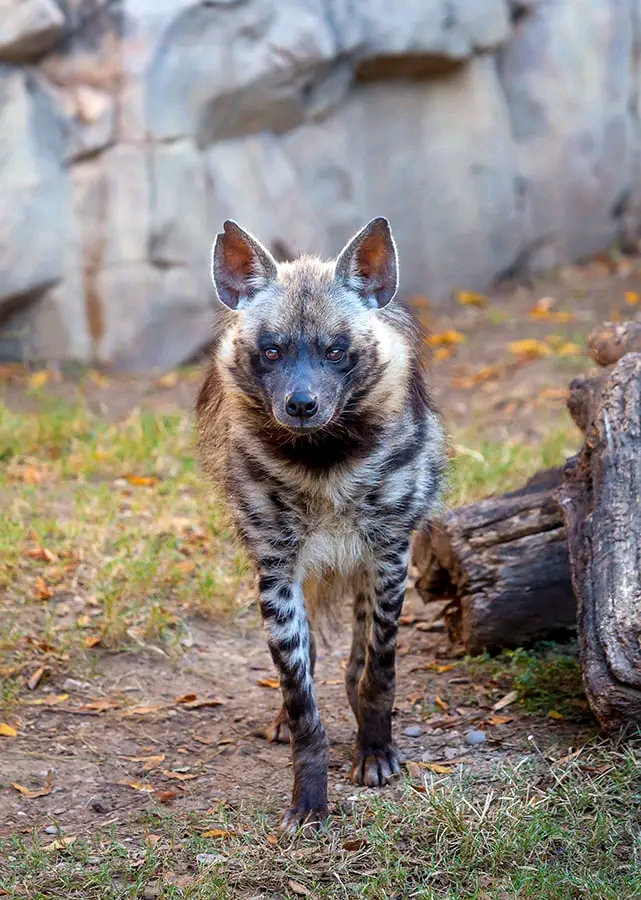FROM WOMB TO CLAN: PARTURITION IN FEMALE HYENAS
FROM WOMB TO CLAN: PARTURITION IN FEMALE HYENAS.
Dear Readership, Nature would want to whine you, but no panic, lol.
In my last Blog Post "Pseudopenises: The Intriguing Portals of Life", we delved into the unique features of Female Spotted Hyenas - Their Pseudopenises, and that cemented the fact that they are very special species of animals as they use these pseudopenises to pee, to mate and even to give birth (Isn't this mind-blowing? Of course, it is) and this is why I had to purpose in my heart to write about their parturition, the process of giving birth. In this particular blogpost, we'll delve into the unique birth process of female hyenas.
Hyenas are carnivorous mammals that live in clans, typically led by a dominant female. They are known for their intelligence, social complexity, and adaptability. Female hyenas have a unique reproductive system, which includes a pseudopenis, a tubular genital structure that resembles a penis, just as you have learnt earlier (if you have been following me).
Foremost, it is worthy to note that the gestation period for hyenas is about 110 days and that is to say that the cub stay in the womb or uterus of the Mother Hyenas for up to 110 days, in contrast to Nine Months for Human Beings.
The spotted hyena is a non-seasonal breeder, though a birth peak does occur during the wet season. Females are polyestrous, with an estrus period lasting two weeks. The spotted hyena is promiscuous, lol (just like most felines) and no enduring pair bonds are formed. Males will show submissive behaviour when approaching females in heat, even if the male outweighs his partner. This is probably a way of getting her into the mood, to set her hormones on fire for the dire tasks ahead, lol.
Even Females usually favour younger males born or joined into the clan after they were born. Talk about sugar mommy vibes. Older females show a similar preference, with the addition of preferring males with whom they have had long and friendly prior relationships.
Passive males tend to have greater success in courting females than aggressive ones and that is because why not? Copulation in spotted hyenas is a relatively short affair, lasting 4–12 minutes,and typically only occurs at night with no other hyenas present.
The mating process is complicated, as the male's penis enters and exits the female's reproductive tract through her pseudo-penis rather than directly through the vagina, which is blocked by the false scrotum and false testes. And as expected these unusual traits make mating more laborious for the male than in other mammals (because how should "two penises" copulate?), and this also has an advantage as forced copulation is physically impossible. The female must just cooperate with the male for a successful mating process.
The female retracts her clitoris (a part of their pseudopenises) before the male's penis enters it by sliding beneath it, an operation facilitated by the penis's upward angle. The hyenas then adopt a typical mammalian mating posture and usually lick their genitals for several minutes after mating. Copulation may be repeated multiple times during a period of several hours. During parturition or the birthing process, the clitoris ruptures to facilitate the passage of the young, and may take weeks to heal.
Cubs are born with soft, dark brown hair, and weigh 1.5 kg on the average. Unique among carnivorous mammals, spotted hyenas are also born with their eyes open and with 6–7 mm long canine teeth and 4 mm long incisors. Also, cubs will attack each other shortly after birth. This is particularly apparent in same sexed litters, and can result in the death of the weaker cub.
Just as I said earlier, Nature would want to whine you but try as much as possible not to panic.
In conclusion, the birth process of female hyenas is a remarkable and complex phenomenon. Their unique reproductive biology, including the pseudopenis, enables them to thrive in their environment. By understanding parturition in female hyenas, we can appreciate the fascinating diversity of reproductive strategies in the animal kingdom.
If you desire to read more about these wonderful creatures, kindly read more using these links -
https:en.wikipedia.org/wiki/Spotted_hyena
https:rep.bioscientifica.com/downloadpdf/view/journals/rep/108/2/jrf_108_2_010.pdf
And just as the MBN would say.. "Till we get to the promised land, I shall be waiting for when you'll pass me a glass of water and thank God for the gift of grace for this race".
NEXT UP - EMOTIONS IN MOTION: THE COMPLEX DANCE OF CATAPLEXY.
Dear Readership, Nature would want to whine you, but no panic, lol.
In my last Blog Post "Pseudopenises: The Intriguing Portals of Life", we delved into the unique features of Female Spotted Hyenas - Their Pseudopenises, and that cemented the fact that they are very special species of animals as they use these pseudopenises to pee, to mate and even to give birth (Isn't this mind-blowing? Of course, it is) and this is why I had to purpose in my heart to write about their parturition, the process of giving birth. In this particular blogpost, we'll delve into the unique birth process of female hyenas.
Hyenas are carnivorous mammals that live in clans, typically led by a dominant female. They are known for their intelligence, social complexity, and adaptability. Female hyenas have a unique reproductive system, which includes a pseudopenis, a tubular genital structure that resembles a penis, just as you have learnt earlier (if you have been following me).
Foremost, it is worthy to note that the gestation period for hyenas is about 110 days and that is to say that the cub stay in the womb or uterus of the Mother Hyenas for up to 110 days, in contrast to Nine Months for Human Beings.
The spotted hyena is a non-seasonal breeder, though a birth peak does occur during the wet season. Females are polyestrous, with an estrus period lasting two weeks. The spotted hyena is promiscuous, lol (just like most felines) and no enduring pair bonds are formed. Males will show submissive behaviour when approaching females in heat, even if the male outweighs his partner. This is probably a way of getting her into the mood, to set her hormones on fire for the dire tasks ahead, lol.
Even Females usually favour younger males born or joined into the clan after they were born. Talk about sugar mommy vibes. Older females show a similar preference, with the addition of preferring males with whom they have had long and friendly prior relationships.
Passive males tend to have greater success in courting females than aggressive ones and that is because why not? Copulation in spotted hyenas is a relatively short affair, lasting 4–12 minutes,and typically only occurs at night with no other hyenas present.
The mating process is complicated, as the male's penis enters and exits the female's reproductive tract through her pseudo-penis rather than directly through the vagina, which is blocked by the false scrotum and false testes. And as expected these unusual traits make mating more laborious for the male than in other mammals (because how should "two penises" copulate?), and this also has an advantage as forced copulation is physically impossible. The female must just cooperate with the male for a successful mating process.
The female retracts her clitoris (a part of their pseudopenises) before the male's penis enters it by sliding beneath it, an operation facilitated by the penis's upward angle. The hyenas then adopt a typical mammalian mating posture and usually lick their genitals for several minutes after mating. Copulation may be repeated multiple times during a period of several hours. During parturition or the birthing process, the clitoris ruptures to facilitate the passage of the young, and may take weeks to heal.
Cubs are born with soft, dark brown hair, and weigh 1.5 kg on the average. Unique among carnivorous mammals, spotted hyenas are also born with their eyes open and with 6–7 mm long canine teeth and 4 mm long incisors. Also, cubs will attack each other shortly after birth. This is particularly apparent in same sexed litters, and can result in the death of the weaker cub.
Just as I said earlier, Nature would want to whine you but try as much as possible not to panic.
In conclusion, the birth process of female hyenas is a remarkable and complex phenomenon. Their unique reproductive biology, including the pseudopenis, enables them to thrive in their environment. By understanding parturition in female hyenas, we can appreciate the fascinating diversity of reproductive strategies in the animal kingdom.
If you desire to read more about these wonderful creatures, kindly read more using these links -
https:en.wikipedia.org/wiki/Spotted_hyena
https:rep.bioscientifica.com/downloadpdf/view/journals/rep/108/2/jrf_108_2_010.pdf
And just as the MBN would say.. "Till we get to the promised land, I shall be waiting for when you'll pass me a glass of water and thank God for the gift of grace for this race".
NEXT UP - EMOTIONS IN MOTION: THE COMPLEX DANCE OF CATAPLEXY.



